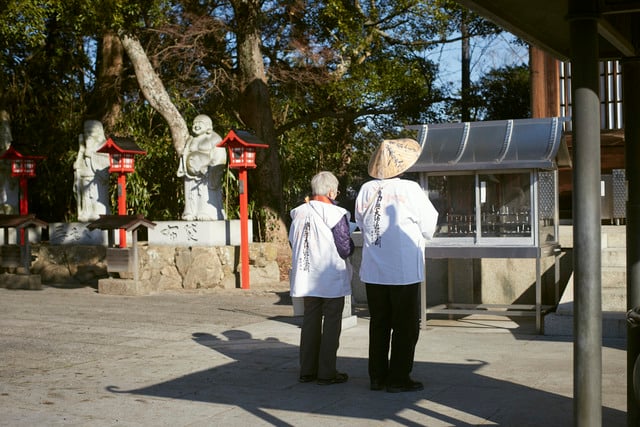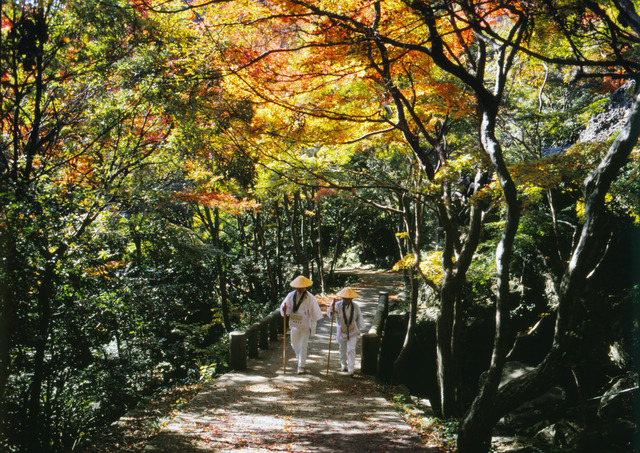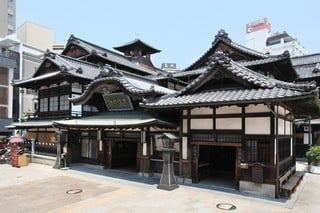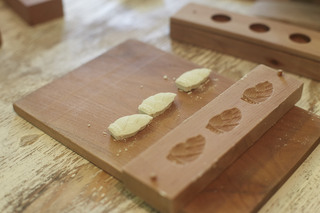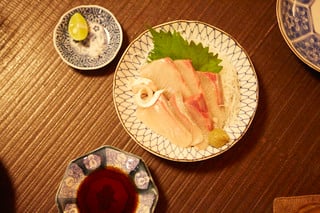Shikoku had once been a remote area, away from the nation’s center and was a place for various religious practices and trainings. The influential Buddhist monk Kukai, posthumously known as Kobo-daishi, often visited the temples of Shikoku for training, and is said to have chosen the 88 temples. Kukai was born in Sanuki Province (the current Kagawa Prefecture) and is well known for establishing the Shingon school of Buddhism, a major Buddhist sect in Japan. After Kukai passed away, his students started a pilgrimage to the temples associated with their great teacher, which became the basis of the Shikoku 88 temple pilgrimage today.
Furthermore, it is said that a human being has 88 earthly desires, which he/she can let go of one by one when visiting all of these 88 temples, leading whatever wishes they hold being fulfilled. The tradition of pilgrimage remains unchanged, a tour during which pilgrims train their minds using their wishes. O-henro, as the pilgrimage is called in Japanese, allows you to leave behind your busy everyday life as you walk, taking in the beautiful mountains and the sea of the Shikoku region, and experiencing the kindness of people.
1. THE PILGRIMAGE: VISITING 88 TEMPLES
Shikoku pilgrimage starts at Tokushima-Awa (temples 1-23 representing the idea of awakening, or hossin), and continues to Kochi-Tosa (temples 24-39, representing the idea of austerity and discipline, or shugyo), Ehime-Iyo (temples 40-65, representing enlightenment) and then to Kagawa-Sanuki (temples 66-88, representing entering nirvana, or nehan), totaling a 1450 km journey. The pilgrimage finishes at Kouya-san, where Kukai spent the final period of his life.
2. START WHENEVER AND WHEREVER YOU LIKE
he standard approach for taking the pilgrimage is to begin at temple no.1 and continue in the order of the numbers. This is called jun-uchi. One can also start at temple no. 88 and continue in the reverse order, which is called gyaku-uchi; this approach is said to include three blessings, known as jun-uchi. There are also other approaches such as toshi-uchi, which means visiting all 88 temples in one journey, kugiri-uchi, meaning visiting only a part of the entire route, as well as ikkokumairi, meaning visiting the temples in a particular prefecture. This enables people to choose where and how to visit the temples, depending on their schedules.
3.YOU DON’T HAVE TO WALK ALL THE WAY
Today, you don’t necessarily have to walk to visit all the temples. Visitors can opt for convenient alternatives such as cars, bikes, or taxis. The temples are open 365 days a year. Pilgrims are encouraged to visit the temples between dawn and sunset.
4.THE BEST SEASONS
Spring (March to May) and autumn (September and October) are the best seasons for completing the pilgrimage tour, but note that it may be crowded during these times. Summer (July and August) can be extremely hot and is not recommended if you intend to bike or walk. Not many people partake in the pilgrimage during winter; when visiting the temples in the mountains during winter, you will need to be careful, because the paths may be snowed over and icy.
5. STANDARD O-HENRO STYLE EQUIPMENT
There is no particular rules regarding what pilgrims must wear, but many wear white robes, or haku-e and suge-kasa (conical Asian hat), supplemented by a wagesa hanging from the neck, and use a kongo-zue, a long walking stick. It is also suggested that you have osame-fuda, a name slip to offer at each temple as proof of your pilgrimage and nokyo-cho, a designated notebook for receiving goshuin, the seal of each temple.
15 records
 FIND SHIKOKU
FIND SHIKOKU




